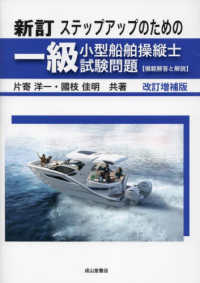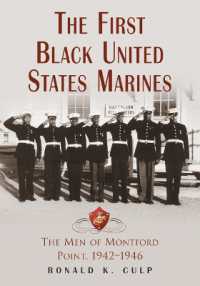- ホーム
- > 洋書
- > 英文書
- > Politics / International Relations
Full Description
The Architects of Toxic Politics in America: Venom and Vitriol explains the history of poison politics in America by profiling some of the key political "attack dogs" who have shaped the modern landscape.
Comparing and contrasting the Trump and Biden presidencies with administrations of the past, the book explains the unique character of the current toxic political moment and the forces that have created it. The book also focuses quite extensively on "non-presidential" architects of toxic politics: other politicians, campaign strategists, activists, and media figures (and a few key figures that have fulfilled two or more of these roles). Drawing on his long career as a journalist specializing in presidential coverage, Kenneth T. Walsh argues that due to the complex, often conflicting nature of American government, the angriest, most decisive voices can command media, voter, and legislative attention and thereby maintain and consolidate power. This results in frustration, alienation, and cynicism—and ultimately, a diminishment of voter participation that can reinforce the vicious cycle and lead to electoral disaster.
For anyone interested in politics, media, and the culture of "gotcha" journalism, this book will also be a valuable addition to undergraduate and graduate courses on politics, the presidency, political and media ethics, campaign history and government.
Contents
Introduction : The Reckoning
PART I THE PRESIDENTS1 The Early Presidents and the Rise of Negativity
2 How Presidents of the Modern Era Fomented Attack Politics
3 Richard Nixon and the Rise of Toxicity
4 Presidents Who Stayed Mostly Above the Fray
5 Donald Trump, the Most Negative President of All
6 Joe Biden Attempts to Restore Civility
7 First Ladies' Benign Influence, with Exceptions
Photo Essay
PART II A ROGUES' GALLERY OF TOXIC INFLUENCERS8 Influential Caustic Politicians
9 The Role of the Mainstream News Media
10 Public Commentators and Polemicists
11 Proselytizers of Division, Entrepreneurs of Polarization and Operatives of Attack
Conclusion








